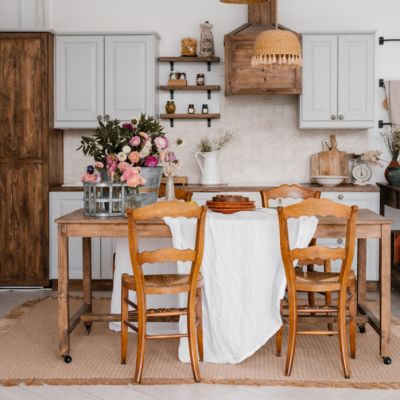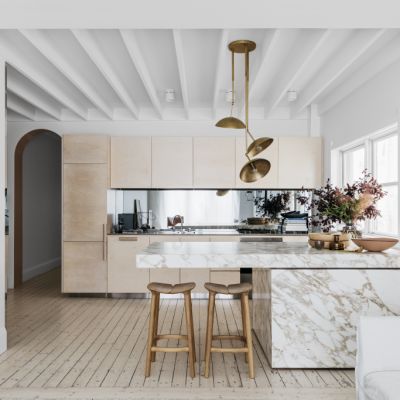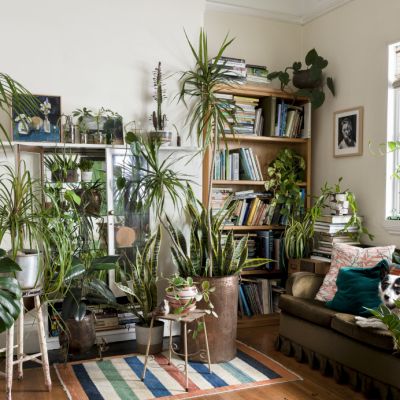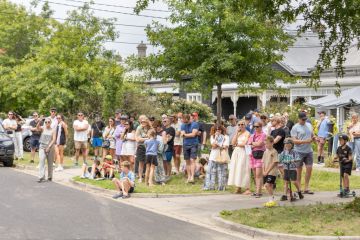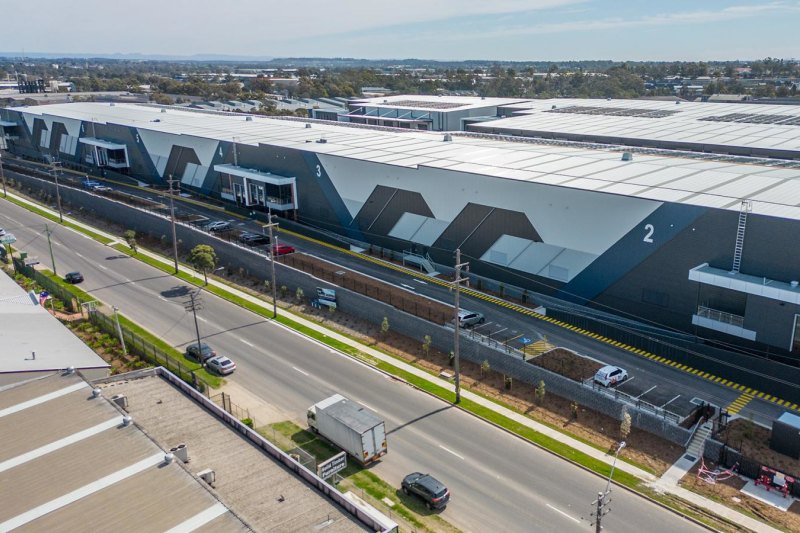Eclectic maximalism: Why Instagram's hidden treasure is more than just clutter and consumerism
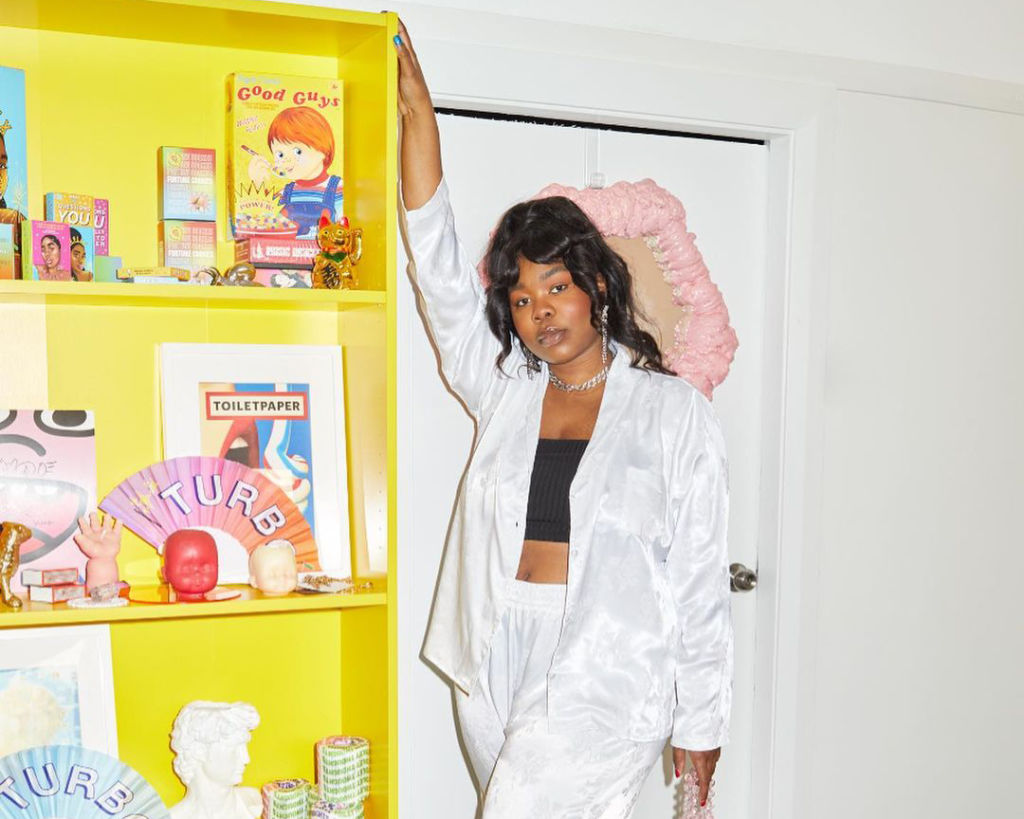
Scrolling through Instagram, Lillian Ahenkan’s home is one that never fails stops you in your tracks.
Known on the platform as @flex.mami, the DJ, podcaster, TV presenter and designer resides in a three-bedroom rental in Sydney’s west – a joyously eclectic celebration of colour and shape.
Elaborate candelabras, expandable foam-framed mirrors, DIY-enhanced furniture in a wide range of colours, and self-made digital artwork transform Ahenkan’s neutral walls and floors into a piece of art itself.
“My interior style is definitely clean maximalism,” Ahenkan says. “I like a lot of things, but I don’t necessarily like clutter. It’s textures, colour-clashing, prints all done in a way that is cohesive – or as cohesive as it can be when you’re looking at a room with 16 different colours in it.”
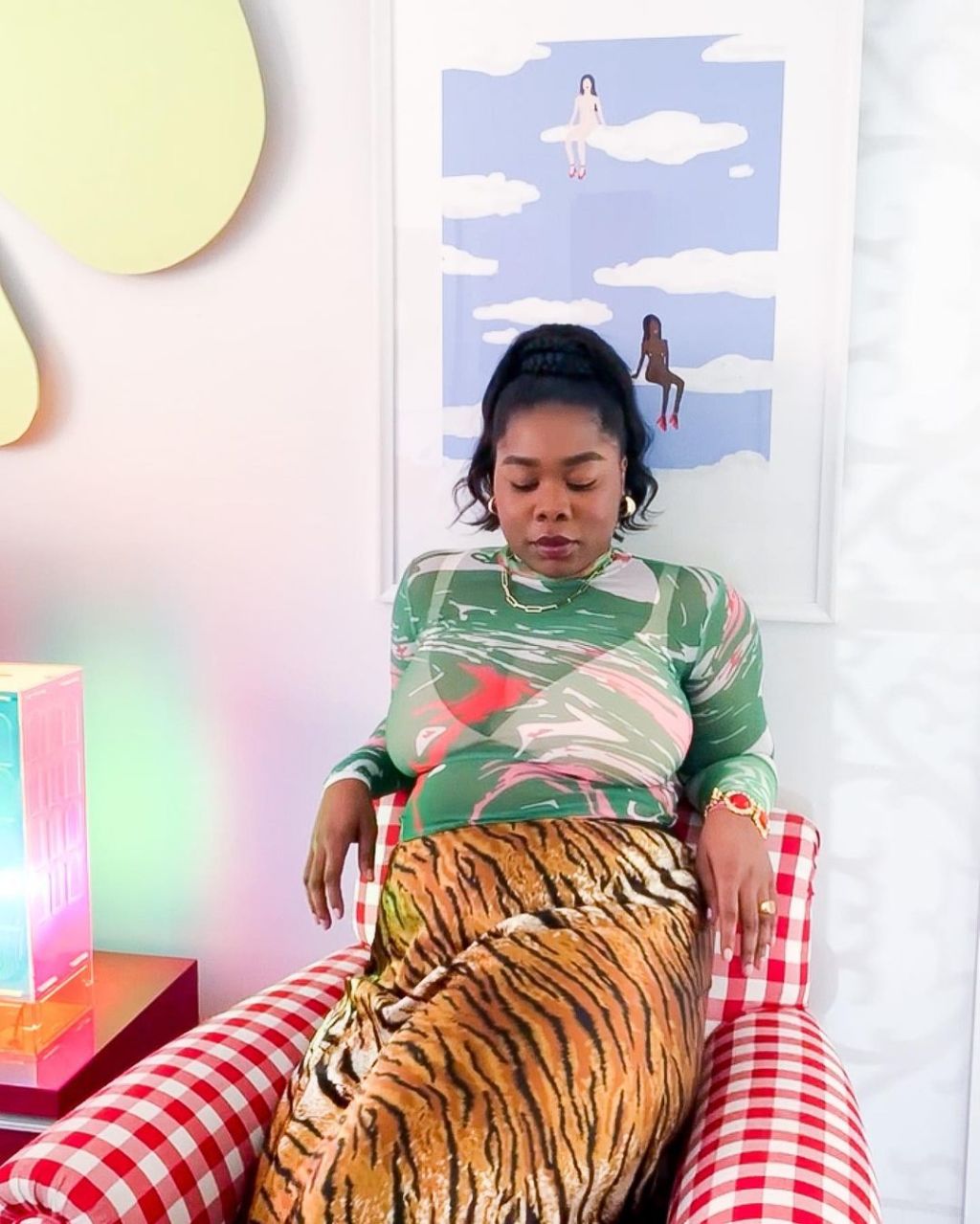
Ahenkan is Ghanian, which has shaped the comfort she finds in colour due to its prevalence in her cultural background.
“My use of colour – I didn’t realise it was a controversial thing until people started asking me ‘why do you use so much colour’. Neutrals are fine, but they don’t really do much for me.”
Ahenkan’s feed is a welcome relief to the minimalist, contemporary or Scandinavian-inspired homes that have dominated design circles on Instagram in Australia. The hashtag #minimalism has 21 million posts on the platform, while #maximalism has a humble 187,000.
Minimalism has become synonymous with “ease of living” made popular by Marie Kondo’s famed The Life-Changing Magic of Tidying Up. The rise of low-waste, environmentally-friendly principles and the growing criticism of fast-furniture only further the appeal of streamlined homes where each item has a purpose, and everything else is seen as unnecessary.
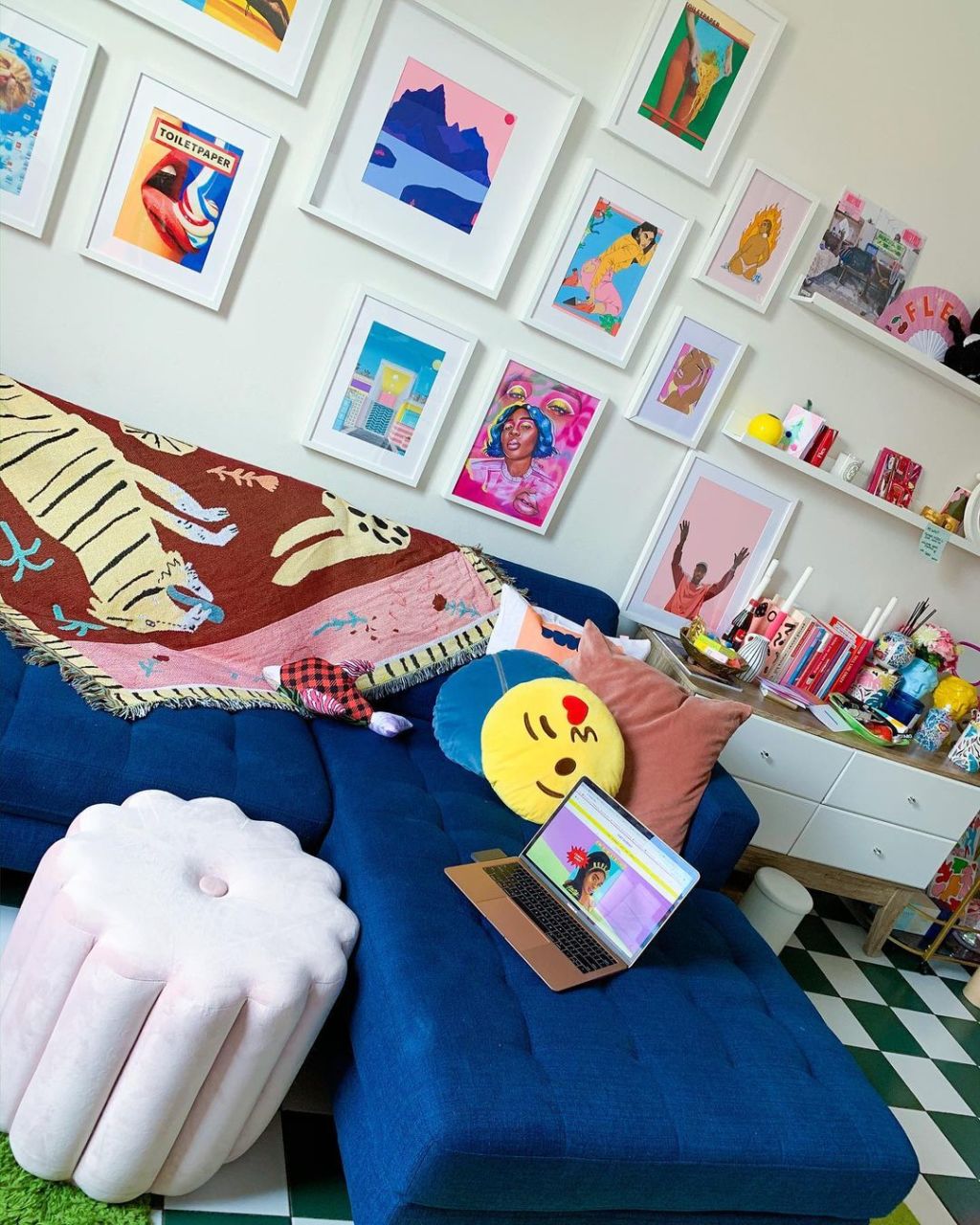
However, that’s not to say eclectic maximalism is simply about purchasing homewares to fill a space. It also relies on careful curation to create spaces that are personalised rather than strictly practical.
“People who identify as maximalists aren’t in the business of hoarding for hoarding sake. It’s the same ‘spark joy’ mentality, but more things have a place than somebody advocating for the Marie Kondo approach,” Ahenkan says.
Sarah Walsh McIntyre’s home is another example of eclectic maximalism at work, but with self-described “mid-century boho” flair. On @theflamingoandthefox she documents her family’s northern New South Wales farmhouse for more than 142,000 followers.
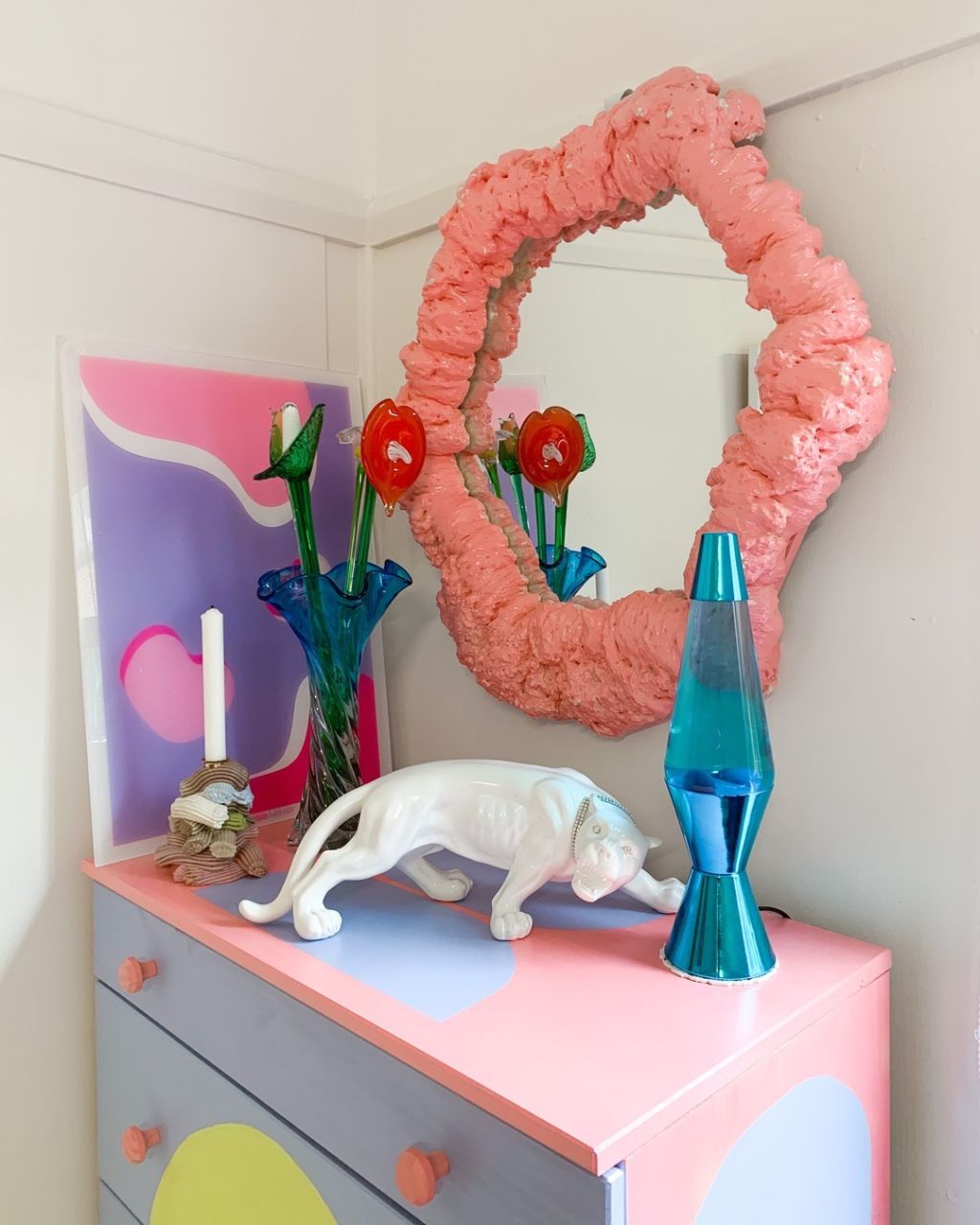
Her rule of introducing only “items that bring joy” to her home hasn’t limited her walls, which are covered in art, couches overflowing with pillows and rugs layered upon rugs.
“It’s maximalism, but it’s what I’d call ‘considered maximalism’,” McIntyre says.
“I really have to like what I’m putting in now. I need to consider it and how it’s going to fit in with what I’ve got. What I’ve been doing is, if I bring something in, something else is taken out,”
Supporting small designers instead of a fast-furniture haul from brands like IKEA and Kmart goes hand-in-hand with reducing wasteful landfill. McIntyre is also a big advocate for shopping second-hand, which can unearth colourful homewares from decades with bolder style like the ’70s and ’80s.
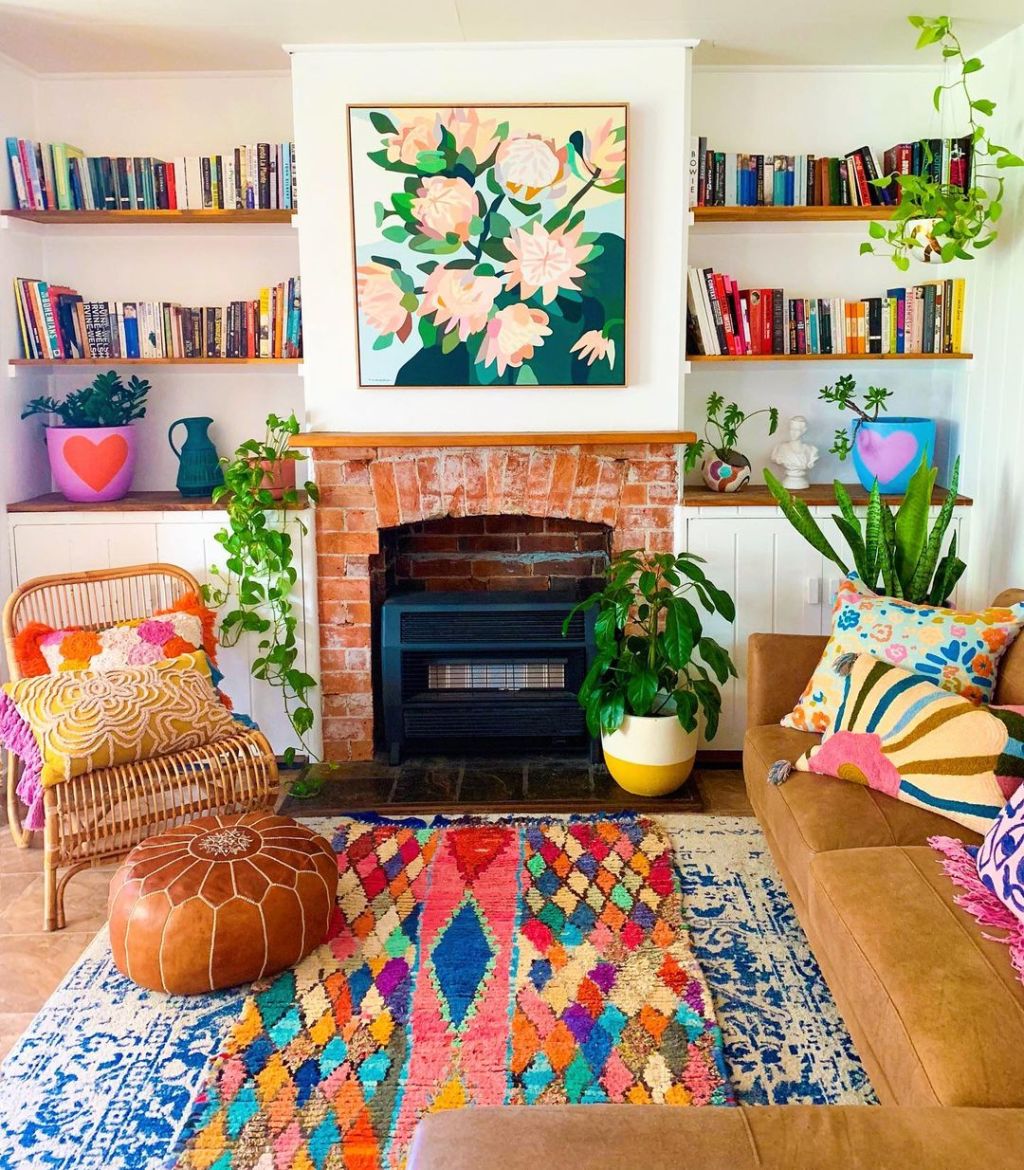
“To get a home looking like mine, it really has to evolve. It really started with a couple of cushions, a vintage map and a pot.
“It takes time. I think people look at my home and don’t know where to start. You can’t bring in a whole lot of things at once. You’ve got to wait to collect those vintage pieces.”
Like McIntyre, Ahenkan says she lives on Facebook Marketplace and invests time in seeking out the right pieces for her home. She is also the creator of Flex Factory, an online store selling homewares that bridge the gap between affordable and eclectic.
“Cute stuff is really expensive,” Ahenkan says. “People have to pay more to live in a space that reflects them. If I want to live in a space that inspires me, I have to do it on my own.”
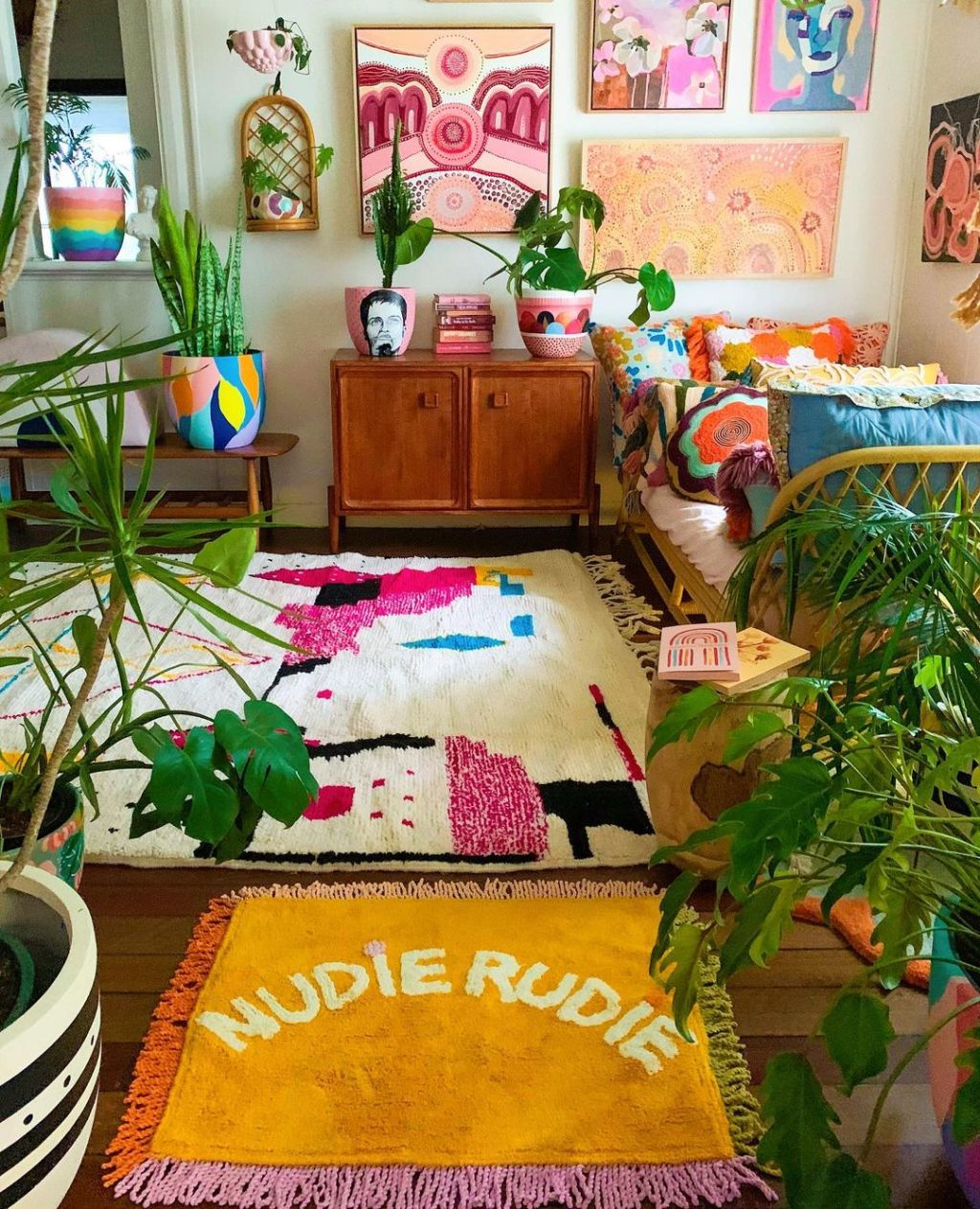
“Everybody is thinking – I want to be quirky, I’m going to buy a yellow couch. But we don’t have yellow couch money. What we do have is cute pillowcase money or cute coaster money. What I was trying to do was find a way to take the creative sensibilities of my space into accessible products,” Ahenkan says.
Launched in 2019, Circle Home is an Australian furniture designer quenching the thirst for bold, statement pieces in the home. Their Instagram-loved ottomans have been seen in the homes of influencers like McIntyre and Ahenkan – with the latter collaborating with the brand on a wall-mounted shelf and table.
“The design ethos … didn’t come out of frustration [about] people buying only whites and greys, but a lot of people don’t want to. Who is servicing that?” co-founder Kelly King says.
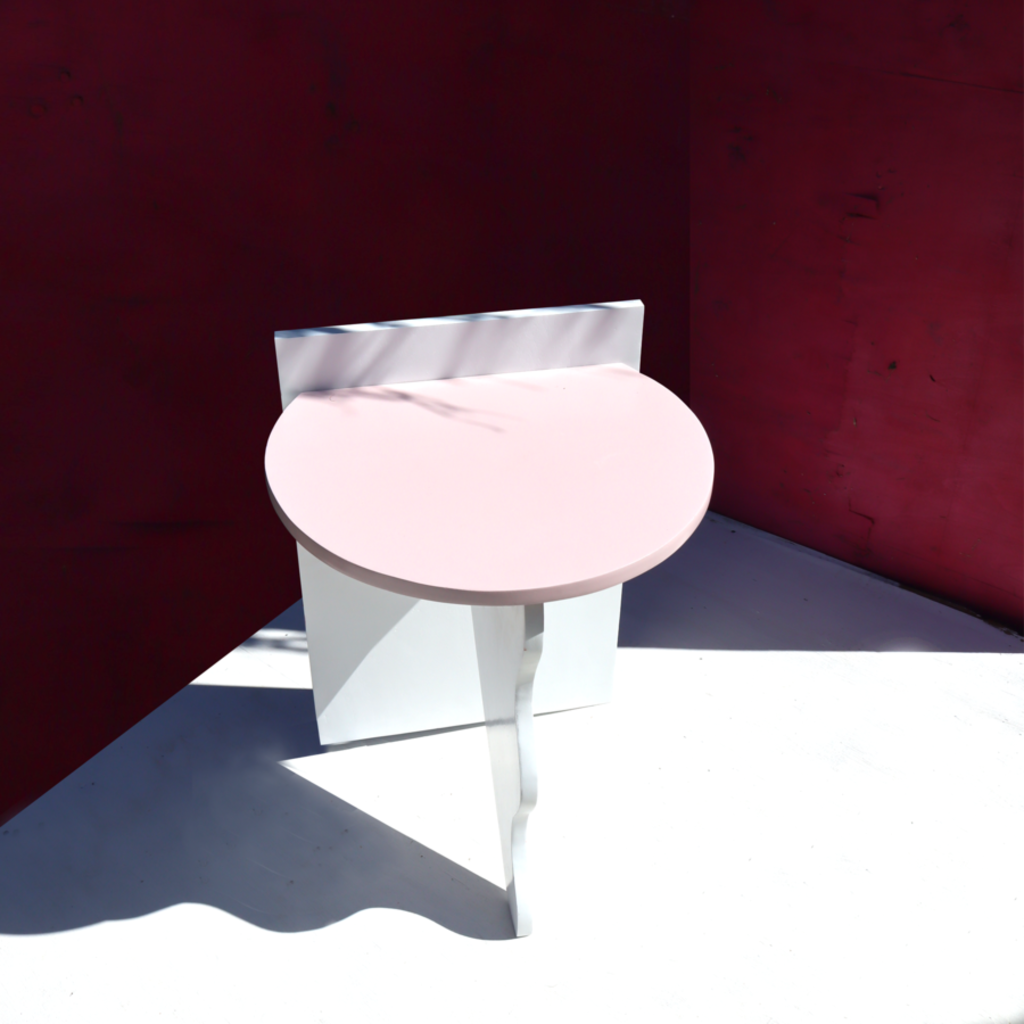
King says she’s inspired by millennial taste on the platform and believes the younger generation are more daring about expressing their identity through their homes.
“I love how open they are to embracing something a little bit colourful, or a little bit weird. Sure, they’re doing it in a rental home or while they’re still at home with a smaller space to furnish. But they’re giving it their own identity, and I think that’s amazing.”
We recommend
States
Capital Cities
Capital Cities - Rentals
Popular Areas
Allhomes
More
